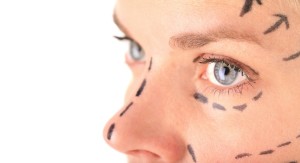Your Guide to Minimal Scarring from a Facelift

Consider whether a Band Aid Mini Facelift will meet your needs.
Many patients know that they want to look younger and they know that they’ve reached a point when non-surgical treatments like Botox® and filler injections simply won’t produce the results they want. But some who think they need a facelift are actually candidates for my minimally invasive Band Aid Facelift instead. While it’s still a surgery, the Band Aid Mini Facelift uses specialized techniques and is performed in-office with gentle numbing (as well as conscious sedation if desired), and among other advantages, produces smaller scars compared to those of a traditional face lift.
Follow all pre- and post-surgical instructions closely.
While there are ways to reduce the appearance of your scars later, it’s best to help them remain as small and subtle as possible from the beginning, and one of the most important factors in the way your scar forms is how well your body heals. Many factors can affect your plastic surgery recovery, from what you’re eating and drinking to whether you’re smoking to the way you care for your incisions, and all of these will also have an impact on the appearance of your scar, so following the instructions you receive both before and after your surgery will help your body’s healing process and help your scars form as smoothly as possible. It’s also crucial to communicate any concerns you’re having about your recovery along the way, either at your scheduled follow-up appointments or simply by calling my office. Keep in mind as well that some patients are genetically more likely to have significant scarring than others, so your body’s natural responses will also affect your scars.
Protect your new scars from the sun.
Scar tissue is more sensitive to the sun than your normal skin, and sun exposure can cause your scars to darken and develop a more prominent appearance. We advise our patients to use sunscreen with an SPF of 30 or higher for at least six weeks after surgery. However, keep in mind that sun exposure can also cause premature aging, so making sunscreen a part of your normal daily skincare can also help your face lift results last longer.
Consider Band Aid Laser Skin Resurfacing to further reduce your scar.
After you’ve healed from your surgery, certain skin treatments can be used to smooth and reduce the appearance of your skin by breaking down the old collagen and helping your body replace it with a more even texture. Band Aid Laser Skin Resurfacing is a minimally invasive way to do this by creating tiny treatment areas which work with your body’s natural healing process to improve the appearance of the skin around them. Beyond helping your scars to be less noticeable, this laser treatment can also enhance the results of your facelift by improving other signs of aging, like age spots, fine lines, and wrinkles.
Scarring is a part of the fascinating way your body heals and protects you, and while that doesn’t make their appearance any more welcome, there are many ways you can make your plastic surgery scarring as minimal and subtle as possible, and you can begin this process before your procedure is even performed. To discuss how I can help you address your specific aesthetic concerns while also keeping scars to a minimum, schedule a consultation with me, Dr. John LeRoy. Or, for more plastic surgery tips and other helpful information, follow me on Facebook, Twitter, and Google+.
